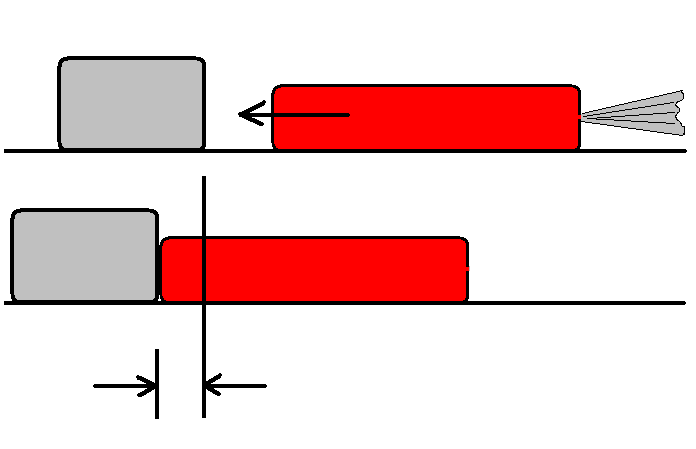Chain Reaction
High Presure Gas - will it move concrete?
Note: these articles have been published in InfoChem, the supliment to Education in Chemistry produced by The Royal Society of Chemistry.
Many are based on the two BBC OU TV series - Hollywood Science

In the film Chain Reaction a young researcher (played by Keanu Reeves) has discovered a way of making huge amounts of energy from water. The petrol companies want him killed and his equipment destroyed. Keanu and his assistant eventually find themselves trapped in a lab doomed to explode. There is a way out but the exit hole is blocked by a giant concrete slab.
Keanu takes a red gas cylinder and lays it on the ground, knocks the top off with a sledge hammer (carefully wrapped in cloth). The high-pressure gas vents out forcing the cylinder to move of like a torpedo. The cylinder slams into the concrete block, moving it enough to allow them to escape. Great - but could it be done?
The gas in these cylinders is at extremely high pressure, ca. 100 - 200 times greater than atmospheric pressure. This pressure is much too high for normal use and so the cylinders have a regulating device fitted to the top. When Keanu knocks this 'head' off from the cylinder the high pressure gas would immedially vent-out through the small remaining hole - producing enormous forces.
Modern gas cylinders are designed to minimise risks. They are made from very thick metal and are extremely strong. In addition, the gas delivery hole going from the cylinder to the head is designed slanting rather then made straight. The idea is that if the head did get knocked off the gas would come out at an angle tending to make the cylinder spin rather propelling it forward like a torpedo.
Gas cylinders are colour-coded: a red cylinder contains hydrogen. So once the gas mixes with the air in the lab it will make for an extremely explosive mixture. Any sparks created, say when the cylinder hits the concrete block, could be disastrous.

There are many unknowns in the film clip and it is difficult to know how much friction would need to be overcome to move the large concrete block. I reckon Keanu might just have been able to do it provided that the hydrogen / oxygen mixture produced by the gas venting didn't blow them all sky high before they got through the hole.
When I started my PhD I remember people talking about an infamous laboratory safety video doing the rounds. A gas cylinder was shown toppling over and getting its head smashed off, launching the cylinder across a room and through a brick wall. If you go to the website (www.youtube.com) and search 'cylinder safety' you can see for yourself!
How teachers can use these articles in a lesson
Why Hollywood Science
Open University Hollywood Science web site
Call for clips - do you have a film clip that needs investigating?
Jonathan would like to thank Robert Llewellyn, Gill Watson and Harry Kroto (Vega Trust), all the BBC teams, The Royal Society of Chemistry and all at the Open University.
THE CREATIVE SCIENCE CENTRE
Dr Jonathan Hare, The University of Sussex
Brighton, East Sussex. BN1 9QJ.
home | diary | whats on | CSC summary | latest news

